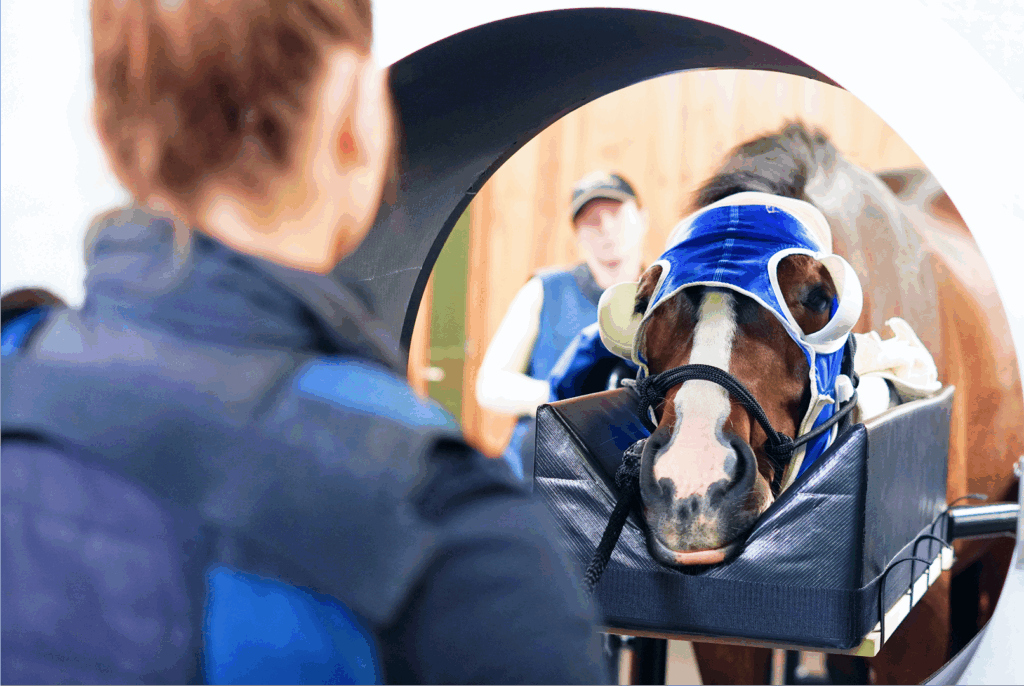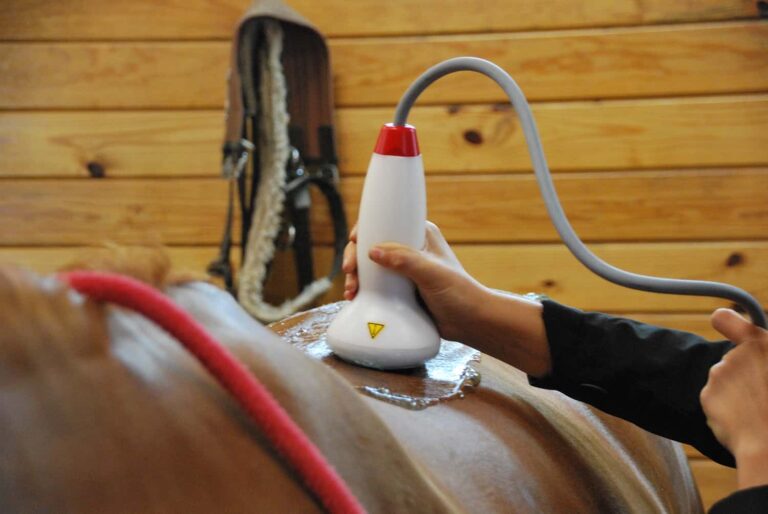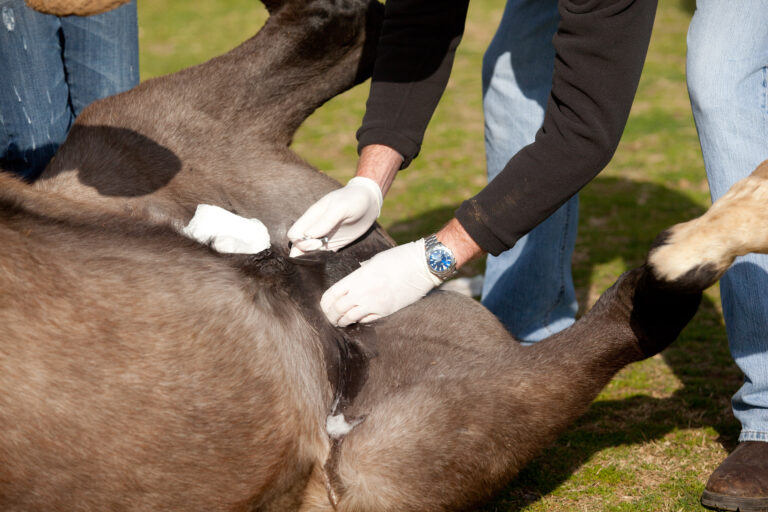
Diagnostic tests and veterinary equipment are advancing rapidly and offering practitioners unparalleled insights into equine structures and pathologies. Take computed tomography (CT) for example: By capturing high-resolution, cross-sectional images, CT provides more detailed internal anatomy, enabling early and precise detection of complex conditions and enhancing procedural outcomes and decision-making. Another advanced diagnostic modality is magnetic resonance imaging (MRI)—both low- and high-field—which has become commonly utilized in the past decade.
Diagnostic technology like CT and MRI can be expensive and is mostly found in referral hospital settings with high caseloads. Because innovations happen rapidly, equipment might become outdated before its useful life has been expended. When purchasing a piece of equipment or a vehicle that has an expected usable life, keep the term of your loan as short as possible, and never extend the payments past the amount of time you expect to have the asset in service. Electronics tend to have shorter useful life spans than other types of equipment, due to rapid technology updates. Although manufacturers typically recommend practices budget to replace their electronic equipment every five years, some veterinarians manage to keep their digital radiography and/or ultrasound units functional for eight to 10 years with careful use. The diagnostic capabilities of new equipment, however, might be substantially superior.
Practices in competitive marketplaces often feel compelled to be the first to have the latest equipment to rise to the top with clients, but smart investments are critical for the practice’s financial health. Even in more rural areas, clients increasingly expect all veterinarians to offer digital radiography and ultrasound. These expectations can be financially challenging for some small or solo practices.
Things to Consider Before Buying
How can you decide whether you should buy that shiny new piece of equipment? Perform a thoughtful analysis so you don’t make a purchase you later regret.
Along with the price of the equipment, consider time and wages for staff training, the need for additional staff, any necessary consumable supplies, space requirements at your facility, equipment maintenance, software upgrades, and interest costs if you finance the purchase. Also think through nonfinancial factors, including what types of cases will benefit from the new technology, how you will educate clients and market your new service, whether all your doctors will feel comfortable using the new equipment, and how you will share it if multiple doctors wish to use it.
Make an educated decision based on whether a purchase is logical for the practice, needed by the regional equine community, good for the practice’s patients, and fiscally responsible. Start by conducting a simplified breakeven analysis. First, determine your fixed costs. A piece of equipment’s fixed cost will not change based on the number of procedures you perform, but the more procedures you perform using that piece of equipment, the more the fixed cost per procedure decreases. Therefore, the goal is to have enough volume to lower the average fixed cost to an affordable number.
Second, determine the variable costs. These typically remain the same per procedure, but the total cost fluctuates in direct proportion to changes in volume. A variable cost might be a disposable supply used in a procedure, such as an extracorporeal shock wave probe that delivers a certain number of shocks, after which it must be replaced. With a digital radiology unit, a technician typically has to hold the imaging plate for each image capture, so the variable cost would be the technician’s cost per minute times the average number of minutes per image. The more procedures you perform, the more variable costs you are going to incur. The total cost per procedure can be calculated by adding the fixed cost per procedure to the variable cost. As the number of procedures you do goes up, the total cost of a procedure will go down.
It’s important to have an accurate forecast of the equipment’s expected number of uses. The veterinarians performing the procedure or using the technology can generally provide an estimated volume they expect to perform each month. This figure often varies with the seasonality of most equine veterinary practices. Because the number of times your practice uses the equipment is critical for the financial solvency of the purchase, it is important to be conservative with these estimates.
Determine Cost Per Use
When you have high-quality diagnostic equipment, you often gain the opportunity to perform additional ancillary services on patients. The client, who might have hauled her horse to the clinic with the diagnostic technology, might request additional therapies and services while she’s there. These revenues can increase the profitability of a purchase considerably. However, don’t make excessively optimistic forecasts, especially involving expectations that local veterinarians will refer their patients for diagnosis. Because of the referring vet’s potential loss of ancillary service revenue, these referrals often do not materialize.
It can be helpful to investigate the cost per use (CPU) with different volumes of use to determine your breakeven point. This will tell you the approximate number of equipment uses needed each month to avoid using existing profit to pay for your purchase. A new piece of equipment should be a new source of profit, not cannibalize existing earnings. When determining these figures, remember to include costs for a maintenance contract, marketing, and technician time for setup, acquisition of images, archiving of results, and pack up. These calculations can also help you decide what price you will charge for each use of the new equipment.
In Table 1, the newly purchased digital radiology unit will cost $50,000 and be financed at 6% over 60 months, with a monthly payment of $967. At this practice, a technician sets up the equipment, holds the plate, packs up the equipment, and archives the images. Her $22/hour wage and the other expenses for benefits, payroll taxes, workers’ compensation insurance, etc. bring her hourly expense to the practice to $30/hour, or $0.50/minute. She is efficient at her job, so her practice has estimated her time needed per image at 2 minutes ($0.50 x 2 =$1) per view, which includes setting up and packing up. The practice purchased a service contract for the new machine that has an annual cost of $3,600, or $300/month. They decided to try a ballpark price of $50/view to see how many views they needed to take each month for the equipment to break even and begin generating a profit.
Table 1. Cost Per Use of Digital X-Ray
| Digital X-ray – Monthly Use | 10 views | 20 views | 30 views | 40 views | 60 views | 80 views | 100 views |
| CPU= [P+ S+ T(#of views)]/# views Payment (P): $967.00 for 60 months ($50,000 purchase price @ 6% interest) | CPU: $127.70 | CPU: $64.35 | CPU: $43.23 | CPU: $32.67 | CPU: $22.12 | CPU: $16.84 | CPU: $13.67 |
| Client price per view = $50 x # of views = Revenue (R) | R: $500 | R: $1,000 | R: $1,500 | R: $2,000 | R: $3,000 | R: $4,000 | R: $5,000 |
| Technician cost (T) per view (setup, hold plate, clean up, archive) 2 minutes @ $0.50/ minute = $1 per view | T: $10 | T: $20 | T: $30 | T: $40 | T: $60 | T: $80 | T: $100 |
| Service contract (S) $3,600/year = $300/month | S: $300 | S: $300 | S: $300 | S: $300 | S: $300 | S: $300 | S: $300 |
| Profit = R – T – S – P | (-$777) | (-$287) | $203 | $693 | $1,673 | $2,653 | $3,633 |
The cost per use is equal to the monthly loan payment plus the monthly service contract amount (fixed cost) plus the variable cost of the technician’s time, divided by the number of views. Determine profit by subtracting the fixed cost and variable cost from the revenue.
The price you charge the client for each view minus the variable expense per view when divided into the total fixed cost will give you the exact breakeven point of required equipment uses in the loan amortization period.
Total fixed cost / Price charged per view – Variable expense per view = Uses per amortization period ($967/month x 60 months)/($50-$1)
$76,020/$49 = 1,551 views in 60 months
1,551 views/60 months = 25.85 views per month
In this case, the $50 fee minus $1 per view for the technician equals $49. Adding the loan payment of $967 for 60 months and the $3,600 per year maintenance contract cost for 5 years is a total fixed cost of $76,020. Divide by $49 to get at total of 1,551 views in 60 months to break even. Dividing by the 60 months yields 25.85 uses per month to break even.
You can also do this calculation on a per month basis. The price for each use minus the variable expense per use when divided into the fixed cost per month will give you the breakeven point of how many uses are required per month. The $50 fee minus $1 per view for the technician is still $49. The loan payment of $967 and the $300 per month maintenance contract cost adds up to $1,267. Dividing $1,267 by $49 yields 25.85 uses per month to break even.
If you divide the total number of uses you calculated to pay off the total fixed expense by the average number of procedures you expect to perform each month, you’ll get the number of months it will take to break even on the equipment purchase.
Total views needed to satisfy total fixed expense / Average # of procedures performed/month = # months needed to pay loan
So, in the case of the digital radiology unit, you need to take 1,551 views. If you believe you’ll take 200 views per month during the busy half of the year and half that many during the slow part of the year, your average monthly use would be 150. 1,551 divided by 150 is 10.34 months.
It is often good to know a “ballpark” of what others’ fees are for this service to be sure you’re staying reasonably competitive. While it is unlawful to collude with other veterinarians to set prices, this information might be common knowledge in the equine community.
Take-Home Message
In conclusion, the more you use your assets to produce revenue, the quicker you can retire the associated purchase price and the sooner that equipment will be profitable. Make sure you capture all charges when using your equipment. Beware of buying technology that will have expenses you cannot offset with revenue because this will erode your profit. The time taken for a careful analysis of the breakeven point will help you make the best decisions about purchases.
Related Reading
- The Business of Practice: Starting a Veterinary Practice With Cash
- 6 Ways to Improve Equine Practice Profitability
- Business Briefs: Can I Afford This New Veterinary Equipment?
Stay in the know! Sign up for EquiManagement’s FREE weekly newsletters to get the latest equine research, disease alerts, and vet practice updates delivered straight to your inbox.




